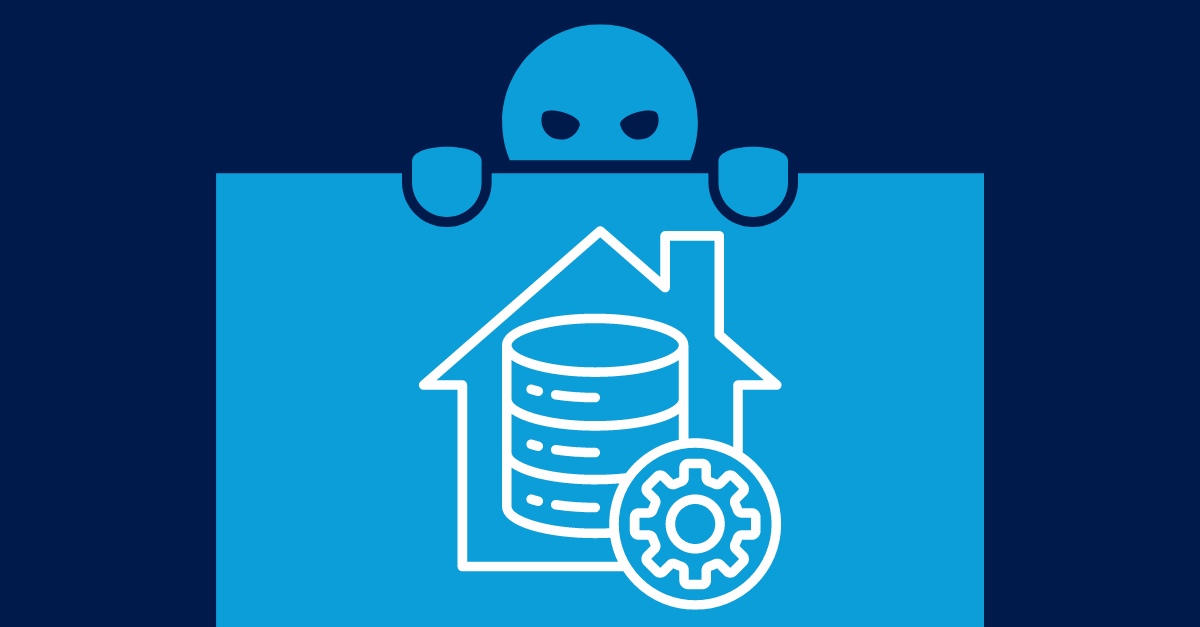For HR teams, especially new people analytics leaders, a hidden danger lurks in the shadows that can significantly hinder success: It's your Workforce data architecture.
This danger comes from a substantial blind spot for organizations between HR and IT, making it difficult for new people analytics leaders to be successful and for HR teams to effectively leverage data. Understanding and bridging this gap is essential for unlocking the full potential of workforce analytics, which is increasingly vital in today's data-driven business environment.
Troubleshooting the People Analytics Ecosystem
When an HR organization embarks on a journey into people analytics, or when a new people analytics leader establishes a team, one of the first tasks is understanding and assessing the HR data landscape. Alongside stakeholder meetings, team assessments, and making the case for the necessary tech stack, evaluating the data infrastructure is crucial within the first 90 days.
Initially, teams might try to manage with available system reports and surveys. Those teams end up relying heavily on manual data wrangling, which in turn brings human error, bias, and friction into processes and often involves complex and messy spreadsheets. Maintenance of those manual systems will eventually hold the team back.
This approach carries significant risks, as it is prone to errors and inefficiencies. Moreover, if the key person managing these processes goes on leave or resigns, the entire operation could fall apart, leaving the team holding the bag on an impenetrable data model.
When it comes to advanced analytics, the main trouble HR finds itself in at these companies is that people analytics teams can’t run on raw data from system reports alone. In order to reach beyond reporting and into analytics, people analytics teams require architected data, which means raw data must be converted into usable metrics and dimensions.
An investment in data architecture forms the bedrock upon which advanced analytics and insightful decision-making are built. Access to clean, well-architected data is essential for the success of People Analytics teams.
Bridging the “Invisible Gap” in Building a Solid People Analytics Data Infrastructure
So the people analytics leader starts their journey: What data do I have, what data do I need, and what technologies produce data across our workforce ecosystem (HRIS, ATS, Survey, etc). Who do I have that can help me?
But they quickly face a two-fold political problem:
1. On the HR side
- Their leaders and peers on the HR leadership team may be just starting to get familiar with analytics, and data architecture is a step beyond that comfort zone. HR education generally doesn’t cover data engineering and, to give that some credit, why should it? Most HR leaders will not need to engage in data architecture conversations. And to that point, most people analytics professionals are even downstream from these conversations or have to learn it on the job, too. There are very few, if any, courses for HR professionals on the nuances of workforce data architecture.
- Additionally, data engineering for analytics is a unique need specifically and almost entirely for people analytics within an HR team. People analytics regularly centralizes and handles this work on behalf of their HRLT peers, which inadvertently hides this work – and the pain of this work – from their peers.
2. On the IT side
- One might assume that IT or central data teams could provide the necessary support for people analytics leaders. While this is true in some organizations, the reality often is that IT and enterprise engineering teams, despite their data expertise, lack understanding of the unique nuances of slow-changing dimensions of workforce data and HR processes. That’s why we provide resources to help, like this 5 Tips for Getting Data Extraction Right blogpost.
- Additionally, IT teams are frequently overwhelmed with demands from various departments such as product, marketing, sales, and finance, making it challenging to prioritize HR-related data projects. The other hard truth is that we are still in a political reality where teams outside of HR don't readily recognize the value or prioritize this work, as we illustrate in The Little Red HR Team: A modern retelling of a timeless classic.
So the people analytics leader, who needs workforce data to be extracted, architected, and modeled to do their assigned job, now has a problem.
Why this gap is even more detrimental if you’re moving toward AI in HR
Navigating Data Architecture Hurdles
Securing buy-in, resources, and priority for data architecture work can be challenging, especially when it's often hidden from key teams and not part of the typical job description. Historically, people analytics leaders have faced two main options, each with its drawbacks:
1. Educate and influence campaign
To get this work done, the people analytics leader embarks on an extended period of education for both HR and IT to explain what's going on and why they need to spend time, resources, and priority building an analytical data warehouse, not just reports from the core HRIS. This is thankless work trying to upskill and educate teams who do not want to know or need to know about this area to do their day jobs. These campaigns are long journeys.
2. Just get it done
The people analytics leader advances into this “invisible work” by themselves or with the team they have, and just tries to get it done. People analytics leaders take the work on, upskilling in data engineering and doing the best they can. This results in a “good enough” but ultimately shaky foundation. And while that’s happening, people analytics has to wait until you have data to work with. So you put your head down and get work done. Unfortunately, when it's done or “good enough,” – and this is the hardest part – no one else will notice.
The first option means you lose the critical window of time when new leaders need to show effectiveness. But the second option means you lose visibility and guarantee a long term problem with maintenance. Potentially even more dangerous for a new leader.
With both options, success is far from guaranteed. Both HR and IT teams just want you to get your work done; they don't necessarily want to learn about why their current setup of technology is not working.
There's good news, though. The vendor landscape supporting people analytics has been evolving to meet this need.
How One Model Helps Move the World Forward
One Model is uniquely designed to address the 'invisible work' of data engineering and data architecture in people analytics. This was clearly demonstrated in our work with Elastic, a leading tech company. The One Model platform enabled Elastic to streamline their data processes and significantly enhance their people analytics capabilities.
Read more about our partnership with Elastic.
Data Orchestration
One Model stands alone when it comes to the levels of support we offer for data architecture. Our data orchestration layer is One Model’s crown jewel within the product suite. One Model seamlessly extracts, transforms, and loads your data into a secure, tailored data model within our People Data Cloud (effectively, a sophisticated data warehouse built specifically for your people data).
The automation we establish ensures that your data is consistently updated daily without the need for manual intervention. By eliminating the need for manual data loads or loading files yourself, we provide a reliable and efficient solution for maintaining up-to-date, high-quality data for analytics. This was a game-changer for Elastic, enabling them to maintain accurate data without the burden of manual updates.
Additionally, our platform features direct connectors that go beyond mere extraction of raw files or reports, providing fully modeled data ready for analytics. Whether dealing with flat files or complex data sources, our system integrates and unifies data into a cohesive analytical model, which updates daily, and streamlines your access to data.
Data Engineering Support
And you're not going at this alone or upskilling your team with additional expensive training to make this happen. One of the biggest reasons I chose One Model when I was a buyer in people analytics was that One Model provided data engineering support as part of the subscription. Named resources support your team, but above and beyond that support, the One Model platform and One Model team members maintain the data pipelines.
No more calling IT teams that don't prioritize HR and no need to hire unique and expensive resources for data engineering. With One Model, you will have a partner you can call who not only picks up the phone, but who cares about your success in this “invisible” space.
In Elastic's experience, this support allowed their team to focus on strategic analytics rather than getting bogged down in the technical details of data engineering.
Seamless Integration from Connection to Dashboard
Most importantly, this orchestration happens quickly and securely. You don't have to spend months or years trying to unlock your data. We can extract and create a tailored data model for your HRIS rapidly – from connection to dashboard!
This quick implementation enabled Elastic to quickly transition to leveraging high-quality analytics, accelerating their time to value, and enhancing their overall data strategy.
One Model stands as the global leader in our space, uniquely positioned among people analytics providers as the premier partner for data architecture. Don’t feel like you have to navigate the complexities of data architecture alone. Partner with One Model and leverage our expertise to unlock the full potential of your workforce data.
Reach out to us today to see how we can transform your data management and analytics capabilities.
Glossary of Terms
When exploring the complexities of data architecture and engineering, it's helpful to familiarize yourself with key terms frequently encountered in this field. The following glossary provides a concise overview of essential concepts and terminology:
- Data architecture: The overarching strategy, rules, and principles governing the collection, organization, transformation, and storage of data in a specific environment.
- Raw data: Unprocessed digital information extracted from a technology, often in a format that's difficult to understand without processing.
- Data integration: The process of combining data from different sources and providing users with a unified view of these data; sometimes referred to as ETL, which is to Extract data from a source, Transform it to fit your needs, and Load it into the end system. At this point, it becomes an analytical data model (see #6).
- Trending data: Data showing changes and patterns over a specified period of time, often used to predict future events or behaviors.
- Data warehousing: A large store of data collected from a wide range of sources within a company and used to guide management decisions.
- Analytical data model: A set of interconnected tables (or fact tables) ready for use in analytics. (a.k.a. a Galaxy schema)
- Unified data model: A framework that unifies multiple data types from different sources into a consistent and universally accessible format.
 Download a resource for your IT team that helps explain why they should care about people analytics.
Download a resource for your IT team that helps explain why they should care about people analytics.
Why Tech Leaders Prefer One Model's People Analytics Platform


